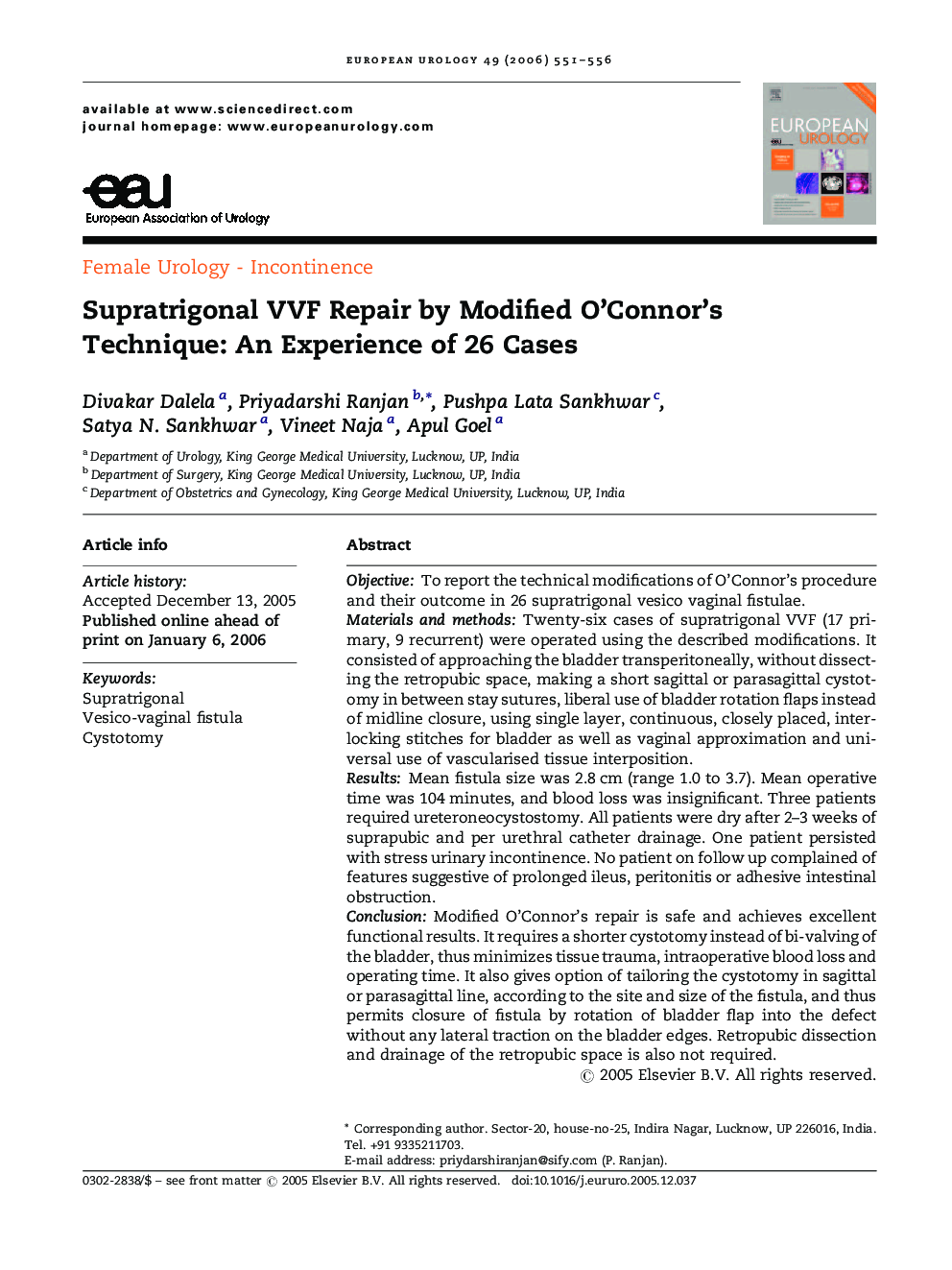| Article ID | Journal | Published Year | Pages | File Type |
|---|---|---|---|---|
| 3927056 | European Urology | 2006 | 6 Pages |
ObjectiveTo report the technical modifications of O’Connor's procedure and their outcome in 26 supratrigonal vesico vaginal fistulae.Materials and methodsTwenty-six cases of supratrigonal VVF (17 primary, 9 recurrent) were operated using the described modifications. It consisted of approaching the bladder transperitoneally, without dissecting the retropubic space, making a short sagittal or parasagittal cystotomy in between stay sutures, liberal use of bladder rotation flaps instead of midline closure, using single layer, continuous, closely placed, interlocking stitches for bladder as well as vaginal approximation and universal use of vascularised tissue interposition.ResultsMean fistula size was 2.8 cm (range 1.0 to 3.7). Mean operative time was 104 minutes, and blood loss was insignificant. Three patients required ureteroneocystostomy. All patients were dry after 2–3 weeks of suprapubic and per urethral catheter drainage. One patient persisted with stress urinary incontinence. No patient on follow up complained of features suggestive of prolonged ileus, peritonitis or adhesive intestinal obstruction.ConclusionModified O’Connor's repair is safe and achieves excellent functional results. It requires a shorter cystotomy instead of bi-valving of the bladder, thus minimizes tissue trauma, intraoperative blood loss and operating time. It also gives option of tailoring the cystotomy in sagittal or parasagittal line, according to the site and size of the fistula, and thus permits closure of fistula by rotation of bladder flap into the defect without any lateral traction on the bladder edges. Retropubic dissection and drainage of the retropubic space is also not required.
